Mike Saul
PartnerView Profile
* Indicates a required field
Many people choose to have a hair transplant procedure to reduce signs of receding hairlines and help stimulate hair growth. This can be done to help boost confidence, especially in men who might have started to lose their hair at a young age.
If you are planning to have a hair transplant, or have recently had one and want to learn more about the healing process, see our timeline of hair transplant recovery below.

Before you have your hair transplant surgery, you’ll want to focus on keeping your diet as healthy as possible for optimum recovery and results. Steer away from drinking alcohol, smoking, and eating junk food where possible. Also avoid supplements that haven’t been prescribed by your doctor, as these can also affect your healing time. Don’t have any caffeine on the day of your surgery and make sure you get a good night's sleep the night before, so that you are prepared for the day ahead.
At the time of surgery, you will be taken into a sterile room for the procedure and receive anaesthetic injections into the sites where the procedure will take place. Once the injections have kicked in, you won’t be able to feel much pain and you should only feel pressure as the procedure takes place.
Once the hairs at the back of your head have been extracted, these are then placed into the hair transplant site via small channel incisions that have been opened up. You should be discharged from your surgery shortly after your procedure as long as you are doing well and the surgeon says it is safe to do so.
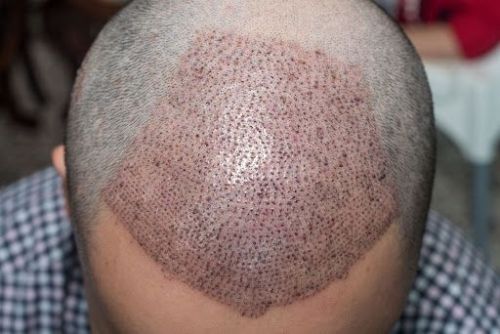
Straight after surgery, you can expect to feel some soreness once the numbing has worn off and redness around the areas that have been treated.
This pain shouldn’t be excruciating and you should be able to manage with regular painkillers. It might feel unusual to sleep on for a few days, until you get used to the new sensation.
You may experience some initial swelling in the forehead area along with small scabs at the incision sites - these will normally flake off during the first week of recovery. Any remaining redness will have dissipated within the first seven days and you’ll be left with pinker tones to your skin for the next week or so.
It’s recommended that you should sleep on your back, somewhat upright for at least seven days - you can use a travel pillow to make this more comfortable. It’s important that, for the first few days, you use the saline solution provided by your surgeon to keep your new hair follicles moist and give them the best chance of successfully transplanting.
Towards the end of your first week, you’ll start to see scabs forming where your new grafts are. It’s important that you don’t pick these scabs, as tempting as it may be, as this could cause some of the grafts to fall out and leave you with scarring and an undesired result.
Be sure to stick to the washing regimen recommended by your surgeon to avoid any damage to these sites, as they will still be quite delicate.
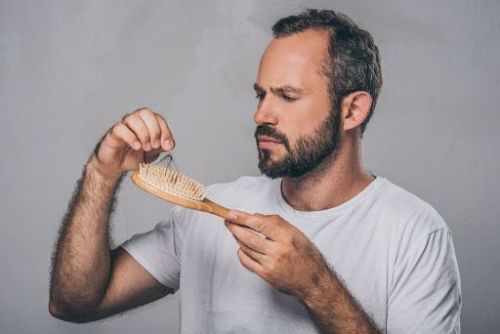
You might start to notice shedding at this point. Don’t panic, this is a normal cycle that the hair will go through due to the trauma caused by the procedure.
You’ll begin to see your receding areas again at this point, but try to remain positive and stay patient. Results won’t happen overnight and hair transplants require quite a lot of healing before the full effect is visible.
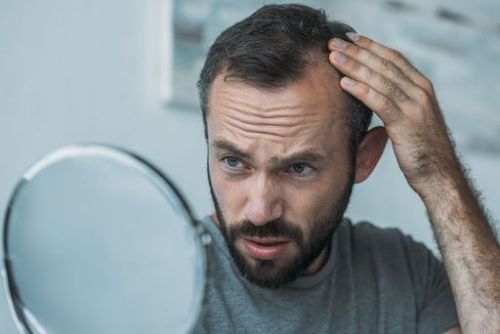
During this time, you might not notice much change and it could seem like your transplant hasn’t been successful. As the hair follicles will have gone into hibernation mode to deal with the trauma caused to your scalp, you may not see any growth.
However, as the weeks progress, you will start to gradually see these hairs returning to the site. At this point, you can shave the hairs down so that they are level to avoid the appearance of unevenness around your hairline.
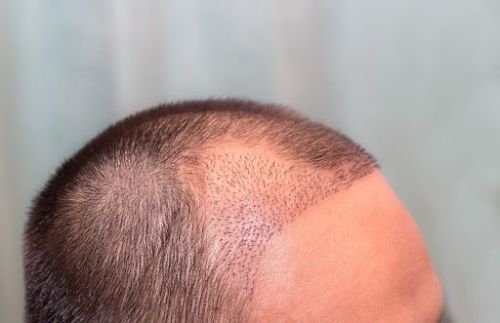
Now, you’ll begin to see your transplanted hair growing back and maturing. The hair will begin to grow thicker, rather than the fine hairs you might have noticed previously.
By the end of this time, you’ll have noticed transplanted hair has started to fill in the gaps between your receding areas.
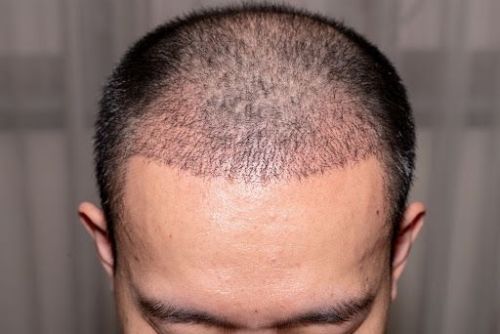
This is when you will really start to notice a difference in growth. Each month, your hair will grow thicker and faster, filling in the gaps where you have previously experienced balding. The finer hairs will begin to mature fully and you’ll begin to get an even head of hair.
Keep taking care of your new hair as best as you can, and remember to go for check ups with your surgeon to ensure that you are recovering well.

Towards the end of the first year, your hair will begin to fully mature and flatten down, growing more like regular hair would. From here on, you should be able to enjoy the progress of your hair growth journey.
You should be able to style your hair as you please and use haircare products on it as normal.
It’s important to be aware that everyone’s recovery story is different. Just because your hair isn’t growing as fast as someone else's doesn't mean that your procedure has been unsuccessful.
If you have any worries or concerns about the healing process of your hair transplant, be sure to speak to your surgeon about this.
If you think you have been subject to a botched hair transplant procedure due to medical negligence and you’d like to make a claim, contact us on 0808 149 7888 or fill in our online form and we’ll get in touch at a time that suits you.
Has your cosmetic breast implants surgery left you with questions and concerns about the success of your procedure? If so, contact us today.
To speak to our expert solicitors about whether you can make a claim for breast implant compensation, call 0808 159 5255 or fill in the quick contact form here to request a call back.